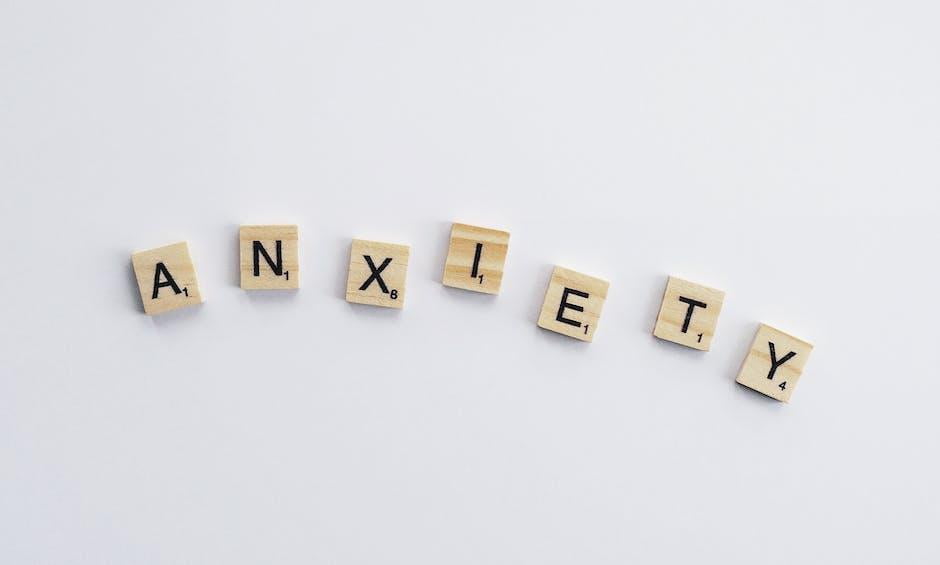Introduction to Neurofeedback
Definition of Neurofeedback
Neurofeedback, also known as EEG biofeedback, is a type of biofeedback that uses real-time displays of brain activity to teach self-regulation of brain function. This technique allows individuals to understand their brainwave patterns and learn how to modify them. The goal of neurofeedback is to transform an unhealthy, dysregulated brainwave pattern into a normal, healthy, organized pattern.
Brief History of Neurofeedback
Neurofeedback has its roots in the 1960s when Dr. Joe Kamiya conducted a study on alpha wave training at the University of Chicago. The field has since evolved, with advancements in technology and neuroscience leading to more sophisticated and targeted neurofeedback training methods.
How Neurofeedback Works
Neurofeedback works by providing information about specific brainwave patterns and teaching the brain to self-regulate and function more efficiently. This is achieved through a process that involves monitoring brain activity using sensors placed on the scalp. The information is then fed back to the individual in the form of a video game or sound, which responds to the individual’s brainwave activity. Over time, the brain learns to control the feedback, thereby learning to regulate its own activity.

Understanding Depression and Mood Disorders
Definition of Depression and Mood Disorders
Depression and mood disorders are mental health conditions characterized by significant changes in mood that affect daily life. They include conditions such as:
Major Depressive Disorder
Major depressive disorder, often referred to as depression, is characterized by a persistent feeling of sadness or a lack of interest in outside stimuli. It affects how you feel, think and behave and can lead to a variety of emotional and physical problems. You can learn more about it here.
Bipolar Disorder
Bipolar disorder, formerly known as manic depression, is a mental health condition that causes extreme mood swings that include emotional highs (mania or hypomania) and lows (depression).
Dysthymia
Dysthymia, now known as persistent depressive disorder (PDD), is a chronic form of depression. While dysthymia is not as intense as major depression, its long-term nature means that it can have a significant impact on quality of life.
Cyclothymia
Cyclothymia, or cyclothymic disorder, is a relatively mild mood disorder. It’s characterized by mood swings between short periods of mild depression and hypomania, an elevated mood.
Causes and Symptoms of Depression and Mood Disorders
Depression and mood disorders can be caused by a variety of factors, including genetic predisposition, hormonal imbalances, and environmental factors. Symptoms can range from feelings of sadness and hopelessness to physical symptoms such as fatigue and insomnia. For a more detailed overview of depression, visit our Depression Guide.

The Impact of Neurofeedback on Depression
The Role of Neurofeedback in Treating Depression
How Neurofeedback Targets Depression
Neurofeedback targets depression by helping to regulate abnormal brainwave patterns associated with the condition. By teaching the brain to self-regulate, neurofeedback can help to alleviate the symptoms of depression and improve overall mood and functioning. This is achieved through a series of neurofeedback sessions, where the individual learns to control their brainwave activity.
Success Stories and Case Studies
There are numerous success stories and case studies that demonstrate the effectiveness of neurofeedback in treating depression. For example, a study published in the Journal of Affective Disorders found that neurofeedback significantly reduced symptoms of depression in patients with major depressive disorder.
The Benefits of Using Neurofeedback for Depression
Non-Invasive Treatment
One of the key benefits of neurofeedback is that it is a non-invasive treatment. Unlike medication or surgery, neurofeedback does not involve any physical intervention, making it a safe and risk-free treatment option.
Long-Term Impact
Another benefit of neurofeedback is its potential for long-term impact. Because neurofeedback teaches the brain to self-regulate, the benefits can continue long after the treatment has ended. This can lead to lasting improvements in mood and overall mental health.

The Impact of Neurofeedback on Mood Disorders
The Role of Neurofeedback in Treating Mood Disorders
How Neurofeedback Targets Mood Disorders
Similar to its role in treating depression, neurofeedback targets mood disorders by helping to regulate abnormal brainwave patterns. By teaching the brain to self-regulate, neurofeedback can help to alleviate the symptoms of mood disorders and improve overall mood stability.
Success Stories and Case Studies
There are numerous success stories and case studies that demonstrate the effectiveness of neurofeedback in treating mood disorders. For example, a study published in the Journal of Affective Disorders found that neurofeedback significantly reduced symptoms of bipolar disorder in patients.
The Benefits of Using Neurofeedback for Mood Disorders
Non-Invasive Treatment
As with depression, one of the key benefits of neurofeedback for mood disorders is that it is a non-invasive treatment. This makes it a safe and risk-free treatment option for individuals with mood disorders.
Long-Term Impact
Another benefit of neurofeedback for mood disorders is its potential for long-term impact. Because neurofeedback teaches the brain to self-regulate, the benefits can continue long after the treatment has ended. This can lead to lasting improvements in mood stability and overall mental health.

Comparison with Other Treatments
Neurofeedback vs. Medication
Effectiveness
While medication is often effective in treating depression and mood disorders, it does not work for everyone. In contrast, neurofeedback has been shown to be effective in a wide range of individuals, making it a viable alternative for those who do not respond to medication.
Side Effects
Medication can often have side effects, some of which can be severe. Neurofeedback, on the other hand, is a non-invasive treatment with no known side effects, making it a safer option for many individuals.
Neurofeedback vs. Psychotherapy
Effectiveness
While psychotherapy can be effective in treating depression and mood disorders, it often takes time to see results. In contrast, neurofeedback can often lead to improvements in a shorter time frame.
Duration of Treatment
Psychotherapy often requires long-term treatment, while neurofeedback can often lead to improvements in a shorter time frame. This can make neurofeedback a more convenient option for many individuals.

Conclusion
Recap of the Impact of Neurofeedback on Depression and Mood Disorders
In conclusion, neurofeedback has shown significant promise in treating depression and mood disorders. By helping to regulate abnormal brainwave patterns, neurofeedback can help to alleviate symptoms and improve overall mood and functioning. With its non-invasive nature and potential for long-term impact, neurofeedback is a viable treatment option for many individuals.
Future Research and Developments in Neurofeedback
While the current research on neurofeedback is promising, more studies are needed to further understand its full potential in treating depression and mood disorders. Future research will likely focus on refining neurofeedback techniques and exploring its effectiveness in treating a wider range of mental health conditions.
For more information on neurofeedback and its impact on depression and mood disorders, visit our Neurofeedback for Depression page.
#Neurofeedback #Depression #DepressionGuide #DepressionAwareness #DepressionCauses
*Sources: Frontiers in Psychiatry, Spectrum Psychological
The Impact of Neurofeedback on Depression and Mood Disorders
What is neurofeedback?
Neurofeedback is a non-invasive technique that uses real-time displays of brain activity to teach self-regulation of brain function. It involves measuring brainwaves using sensors placed on the scalp and providing feedback to the individual in the form of visual or auditory cues. By learning to modify their brainwave patterns, individuals can potentially improve their mental health and cognitive functioning.
How does neurofeedback help with depression and mood disorders?
Neurofeedback can help with depression and mood disorders by targeting specific brainwave patterns associated with these conditions. By training individuals to increase or decrease certain brainwave frequencies, neurofeedback aims to regulate brain activity and improve mood regulation. It can also help individuals develop better coping strategies and reduce symptoms such as anxiety, irritability, and emotional instability.
Is neurofeedback a standalone treatment for depression and mood disorders?
Neurofeedback is not typically used as a standalone treatment for depression and mood disorders. It is often used as part of a comprehensive treatment plan that may include medication, therapy, and lifestyle changes. Neurofeedback can be a valuable adjunctive therapy, helping individuals to better self-regulate their brain activity and enhance the effectiveness of other treatments.
Are the effects of neurofeedback long-lasting?
The long-term effects of neurofeedback on depression and mood disorders can vary from individual to individual. Some individuals may experience long-lasting improvements, while others may require ongoing maintenance sessions to sustain the benefits. It is important to note that neurofeedback is a skill-based training, and regular practice and reinforcement may be necessary to maintain the desired changes in brainwave patterns.
Is neurofeedback safe?
Neurofeedback is considered to be a safe and non-invasive technique. The sensors used to measure brainwave activity are placed on the scalp and do not involve any penetration of the skin. However, it is essential to consult with a qualified healthcare professional before undergoing neurofeedback, as they can assess whether it is appropriate for your specific condition and provide guidance throughout the process.
How long does a neurofeedback session typically last?
A neurofeedback session typically lasts around 30 to 60 minutes. The exact duration may vary depending on the individual’s needs and the specific protocol being used. The number of sessions required can also vary, ranging from a few sessions to several months of regular training. The healthcare professional overseeing the neurofeedback treatment can provide more information on the recommended session duration and frequency for your specific situation.
Who can benefit from neurofeedback for depression and mood disorders?
Neurofeedback can potentially benefit individuals of all ages who are experiencing depression and mood disorders. It can be particularly helpful for individuals who have not responded well to traditional treatments or who prefer non-pharmacological approaches. However, it is important to consult with a healthcare professional to determine if neurofeedback is suitable for your specific condition and to ensure it is used as part of a comprehensive treatment plan.
Are there any side effects of neurofeedback?
Neurofeedback is generally considered to have minimal side effects. Some individuals may experience temporary fatigue or mild headaches after a session, but these effects are usually short-lived. It is important to work with a qualified healthcare professional who can monitor your progress and address any concerns or side effects that may arise during the neurofeedback training.



